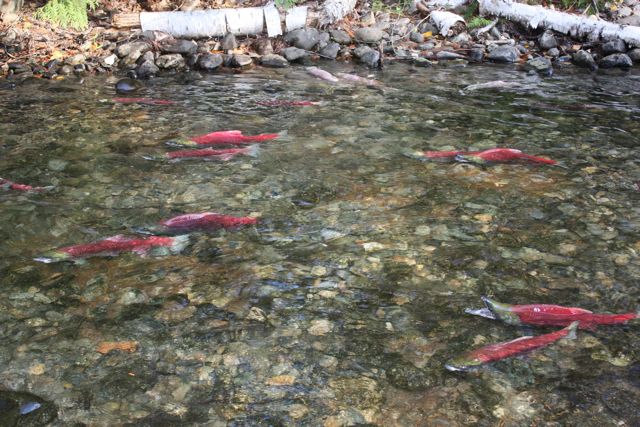The 12-kilometre-long Adams River is the ultimate destination of as many as two million of the returning sockeye. In fact, sockeye salmon return to the Adams River every year but the migration that occurs every fourth year dwarfs the others, having reached as high as 3.6 million sockeye in 2002. With approximately 65 hectares of stream bed, the diminutive Adams River rates among the richest natural spawning streams in North America.
Four years earlier, the parents of the returning sockeye followed the same waterways, mated, laid their eggs in the coarse gravel stream beds, and died. The eggs slowly developed over the winter, then the warming waters of April and early May induced the tiny alevin to leave the gravel, and the spring freshet carried them down to Shuswap Lake.
For a year, the young salmon roamed Shuswap Lake, dodging predators and feeding in the shallows of the H-shaped lake's many bays and inlets. Then in May and June of their second year, they took a rough and tumble 480-kilometre-ride through the rapids of the Thompson and Fraser rivers to the Pacific Ocean.
Of an estimated 100 million sockeye fingerlings that leave Shuswap Lake in the spring of a peak year, approximately 10 per cent are expected to return to the British Columbia coast in the autumn four years later. In their Pacific wanderings that take them as far away as Japan, natural predators and ocean-going fishing vessels would take their toll.
What an unbelievable sight!
The air above is filled with children's chatter
while the underwater struggle continues.
The stink of rotting carcasses fills the air
as their deaths are recorded.
Further upstream the battle continues.
Partners attempt to lay and fertilize eggs
Before the cycle is completed.






amazing! great shots. i only got a few shots but will post the ones we did get on the augie bloggy.
ReplyDelete